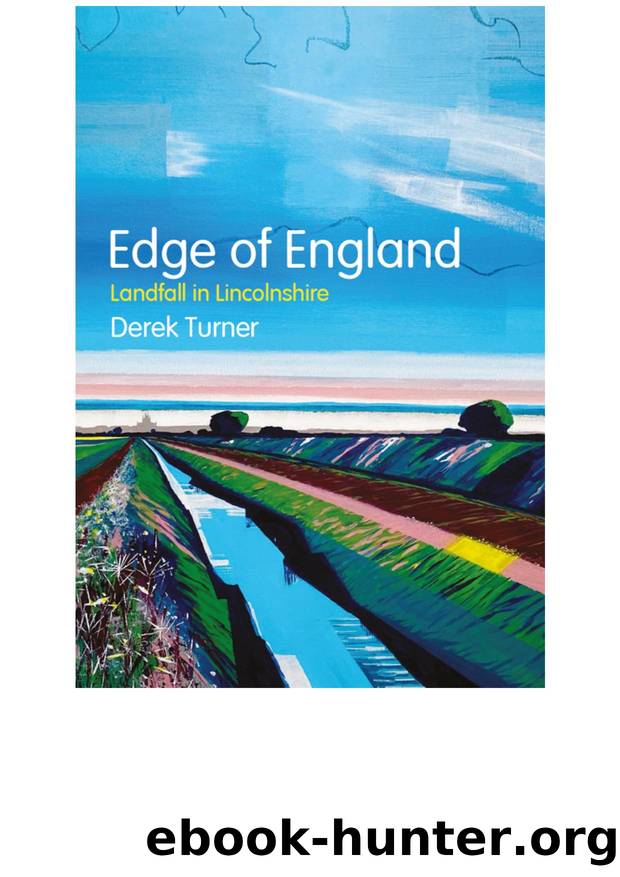Edge of England by Derek Turner

Author:Derek Turner [Turner, Derek]
Language: eng
Format: epub
ISBN: 9781787386983
Publisher: Hurst
Published: 2022-06-24T00:00:00+00:00
North of Scunthorpe is another dimming power baseâNormanby Hall, in its 300-acre estate. The Hall was built between 1825 and 1829 by British Museum architect Robert Smirke for the Sheffields, courtiers, poets, politicians and soldiers hereabouts since the time of Elizabeth I. There are political connections even todayâDavid Cameronâs wife Samantha is the daughter of the eighth Baronet, and grew up on the estateâalthough the Hall has been owned by the council since 1964.
Not long after we came to Lincolnshire, we toured the Hall. The grounds have a herd of red deer, which in mating season attracts nearby wild stags, and the park has sometimes to be closed, lest walkers fall afoul of these impressive animals.45 The Hall is less impressive, in fact dispiritingly institutional with its roped-off, sun-shaded interiors and yellowing-labelled cutlery set out on dusty tables, as the guide says, âas if for a ceremonial banquet.â In recent years, the council has tried to refresh the visitor experience, but using other exhausted clichés.
A different kind of burnout can be detected at Winterton, where an eighteenth-century resident called William Teanby carved his wifeâs gravestone with what feels unpleasantly like gloomy relish, her âsordid atomsâ noted on the stone he used as his table, a cold companion-piece to his own coffin, which he used as a cupboard. The engraver William Fowler (1761-1832) was working in Winterton about the same time on spectres of a different kind, his painstaking colour representations of locally found Roman antiquities. Martial and other Roman satirists would have been amused or irritated by the unusual apparition at Winterton Old Hall, described by mystified early 1800s ladies (or, more likely, ladiesâ maids) as âa ghostly powder-box,â with a powder puff that, however often it was removed from a particular dressing table, would eerily reappearâa ghost ephemeral even by ghostly standards.
Winteringham, where Romans crossed the water on boats from a timber jetty sometimes still visible, had another significant visitor in 672âNorthumbrian queen turned saint Etheldreda (St Audrey), who crossed the Humber here on her way south to avoid distasteful conjugal duties, and seed Christianity and English unity. She founded a church at nearby West Halton and farther away at Stow, and ultimately an abbey at Ely, whose Cathedral eventually arose around her sordid atoms. Through an unjust transmogrification, Etheldreda/Audrey, exemplar of purity, became associated with almost opposite ideas. Her cult sparked a hugely popular annual fair, and the poor quality of cloth sold at this eventâthis âSt Audreyâs laceââineluctably became âtawdry laceâ and then just plain âtawdry,â doubtless to the delight of iconoclasts. But there is nothing tawdry about the view of the Humber as seen from the north-westernmost corner of the county.
Small roads wind round for miles to Alkborough, and the meeting of many waters, and an enticing enigma. This is the tip of the high Cliff, the end of the Edge, overlooking the great commingling of Humber, Ouse and Trent in a glittering blue-green-white hugeness. Alkborough is a place of inchoate excitement. The sea-going yachtsman shows
Download
This site does not store any files on its server. We only index and link to content provided by other sites. Please contact the content providers to delete copyright contents if any and email us, we'll remove relevant links or contents immediately.
| Africa | Americas |
| Arctic & Antarctica | Asia |
| Australia & Oceania | Europe |
| Middle East | Russia |
| United States | World |
| Ancient Civilizations | Military |
| Historical Study & Educational Resources |
Never by Ken Follett(2881)
The Man Who Died Twice by Richard Osman(2300)
Machine Learning at Scale with H2O by Gregory Keys | David Whiting(2292)
Fairy Tale by Stephen King(2070)
Will by Will Smith(2042)
Rationality by Steven Pinker(1765)
The Dawn of Everything: A New History of Humanity by David Graeber & David Wengrow(1571)
The Dark Hours by Michael Connelly(1570)
Principles for Dealing With the Changing World Order: Why Nations Succeed and Fail by Ray Dalio(1373)
Friends, Lovers, and the Big Terrible Thing by Matthew Perry(1328)
A Short History of War by Jeremy Black(1300)
HBR's 10 Must Reads 2022 by Harvard Business Review(1256)
Go Tell the Bees That I Am Gone by Diana Gabaldon(1234)
Can't Hurt Me: Master Your Mind and Defy the Odds - Clean Edition by David Goggins(1227)
515945210 by Unknown(1208)
Fear No Evil by James Patterson(1109)
443319537 by Unknown(1073)
Works by Richard Wright(1018)
Going There by Katie Couric(993)
